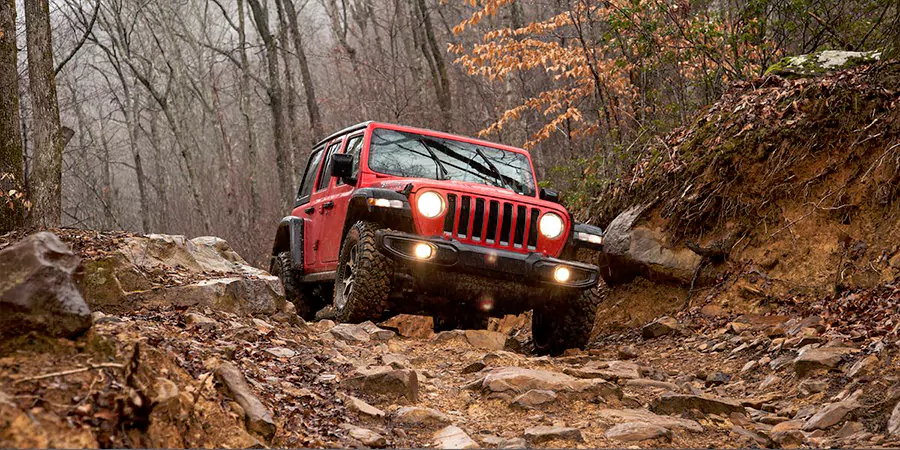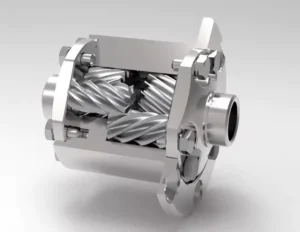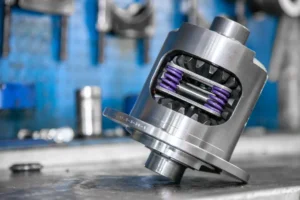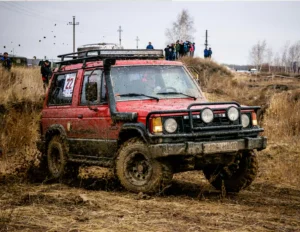
1. Recovery Gear
Winch: A winch is one of the most crucial tools for off-roading. It helps you pull your vehicle out of tricky situations, such as being stuck in mud or sand. Ensure you have a winch with adequate capacity for your vehicle’s weight. Synthetic winch ropes are preferred for their strength and safety compared to steel cables.
Tow Straps and Shackles: Tow straps and shackles are indispensable for recovery missions. They are used to pull a vehicle using another vehicle. Look for high-quality, heavy-duty tow straps and D-ring shackles for maximum reliability. Kinetic recovery ropes can also be useful as they stretch and store energy, providing a more dynamic recovery.
Recovery Boards: These are essential for gaining traction when stuck in loose surfaces like sand, mud, or snow. They are placed under the tires to help you drive out of the problematic area. Brands like Maxtrax are popular for their durability and effectiveness.
Snatch Block: This pulley device increases the pulling power of your winch and allows for angled pulls. It’s a valuable addition to your recovery gear.
2. Tire Equipment
Full-Size Spare Tire: A full-size spare tire is a must-have. Off-roading can be tough on tires, and a flat in the middle of nowhere can end your adventure quickly if you don’t have a proper spare.
Tire Repair Kit: Even with a spare, a tire repair kit can be invaluable. Kits usually include plugs and tools to fix minor punctures on the go. Ensure your kit includes a tire pressure gauge and valve stem tool.
Air Compressor and Tire Deflator: Adjusting tire pressure is crucial in off-roading. Lowering tire pressure can increase traction in soft terrains, while an air compressor helps you inflate the tires back to normal pressure when needed. Portable compressors like those from ARB or VIAIR are popular choices.
3. Navigation and Communication
GPS Device: A reliable GPS device designed for off-roading can guide you through uncharted areas. Choose one with off-road mapping capabilities and robust construction. Garmin Overlander and Trail Tech Voyager Pro are excellent options.
Two-Way Radios: Communication is key in off-roading, especially in remote areas without cell service. Two-way radios keep you in touch with other members of your group. CB radios, GMRS radios, and handheld units like Baofeng UV-5R are commonly used.
Satellite Phone or Personal Locator Beacon (PLB): For extreme remote adventures, a satellite phone or PLB provides an extra layer of safety, allowing you to call for help when out of traditional communication range.
4. Safety Equipment
First Aid Kit: Always carry a comprehensive first aid kit. It should include bandages, antiseptics, pain relievers, and any personal medications. Consider kits from Adventure Medical Kits, which are designed for outdoor use.
Fire Extinguisher: A fire extinguisher is crucial for tackling any unexpected fires, whether from the vehicle or a campfire gone awry. Ensure it’s rated for automotive use (Class B and C fires).
Emergency Supplies: Pack emergency supplies like blankets, water, non-perishable food, and a multi-tool. These can be lifesavers in case you get stranded. An emergency bivvy or space blanket can provide warmth in cold conditions.
Personal Protective Equipment (PPE): Items like gloves, safety glasses, and a hard hat can protect you during recovery operations and vehicle repairs.
5. Lighting and Visibility
LED Light Bars: Off-roading often means venturing out at night or in low-visibility conditions. LED light bars provide excellent illumination, ensuring you can see obstacles and navigate safely. Brands like Rigid Industries and Baja Designs are known for their high-quality lights.
Headlamps and Flashlights: Personal headlamps and flashlights are essential for night-time repairs or setting up camp in the dark. Look for rechargeable options with long battery life and high lumens.
Marker Flags: In areas with tall vegetation or dunes, marker flags increase visibility to other drivers, reducing the risk of collisions.
6. Tools and Spare Parts
Basic Tool Kit: A basic tool kit should include wrenches, screwdrivers, pliers, and other essential tools to perform minor repairs. A comprehensive kit from brands like Craftsman or DeWalt can be very useful.
Spare Parts: Carry essential spare parts like belts, hoses, and fuses. These can come in handy for on-the-spot repairs and can prevent a minor issue from becoming a major problem. Also consider carrying spare U-joints, drive shafts, and fluids (engine oil, coolant, transmission fluid).
Jack and Jack Stand: A high-lift jack or bottle jack can help lift your vehicle for tire changes and repairs. Ensure you have a stable base plate for soft or uneven ground.
7. Comfort and Convenience
Portable Air Compressor: For re-inflating tires after adjusting pressure for off-road conditions.
Portable Jump Starter: A dead battery in the wilderness can be a major setback. A portable jump starter ensures you can get back on the road. Look for ones with built-in air compressors and USB ports for added functionality.
Portable Shower and Toilet: For longer trips, portable showers and toilets can add a level of comfort and convenience, making your off-road adventure more enjoyable.
Camping Gear: If your off-roading includes overnight stays, pack quality camping gear like tents, sleeping bags, cooking supplies, and water purification systems.



